Charlotte Hildebrand was our first comic book artist at the 360 Xochi Quetzal residency program. Charlotte lives and works in Los Angeles and is a genuinely funny person. She moved from New York to LA in the mid-80s to study at the American Film Institute. After school, however, instead of going to work in the industry, she produced her first child. While raising her children she worked as a writer and editor for various non-profit arts organizations, as a journalist and freelance book editor, as well as taught ESL. After the kids left home, however, she began an art practice, which continues to this day. Charlotte started her exploration of art by putting up wheat-paste posters in the dead of night around Los Angeles, which led to working as a muralist, painter, illustrator and cartoonist. She is presently working on a graphic memoir about growing up in segregated Louisville, KY. She also teaches graphic memoir and comic arts at the Center for the Arts, Eagle Rock, a community based non-profit in LA, as well as teaching a private online workshop called Kuarantine Komics.
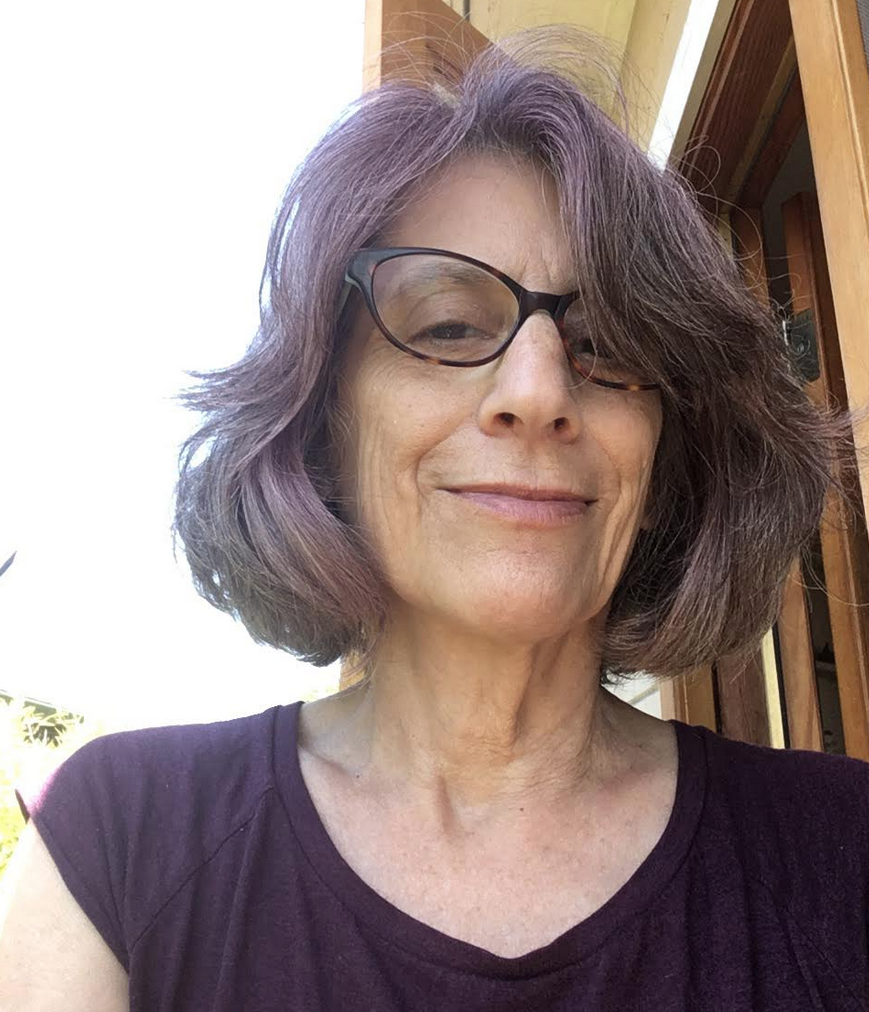
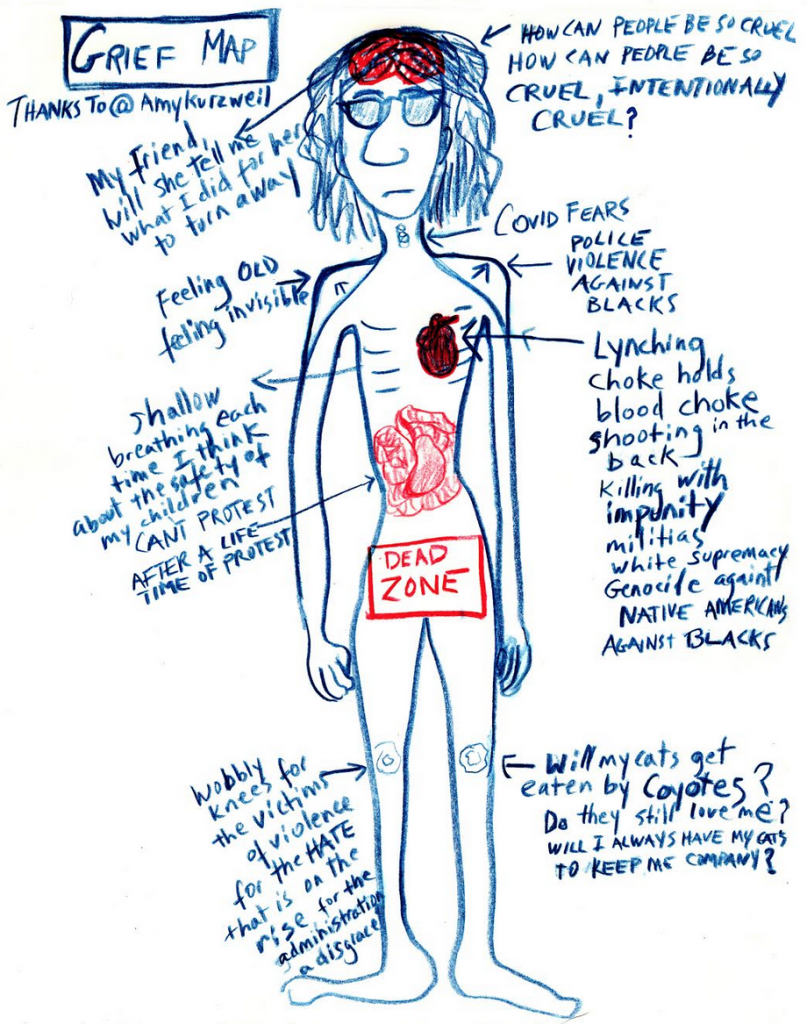
Give us some background about yourself as a comic artist.
When writing and editing work dried up in the 2008/9 recession, I began a blog. Mainly I wanted to get some stories and essays down that I had been working on for years. Out of nowhere (that may not be true, but it felt that way) I started to illustrate the stories, reaching back to an earlier time when I drew a lot. My blog posts picked up steam with those illustrations, which propelled me into melding text and images, but I didn’t have a name for it yet. Then I went to hear Allison Bechdel talk at the LA Public Library about her first book, Fun Home. It blew me away. I can honestly say it was a revelation: how one could tell stories through images, and in the doing so, elevating the story into another dimension. The mere fact of putting images to text like you do in a film, (remember I had studied filmmaking) changed everything. Not that I knew where to begin, but as I learned later, most comic writers/artists are self-taught. For me, comics became my métier.
Why was it important for you to attend a residency at this point in your career and what made you choose 360 Xochi Quetzal for your residency?
I’d been working on a compilation of coming of age stories, when the politics of our country changed and I found myself manically shifting my attention to political cartoons. Steve Brodner, one of our country’s foremost political cartoonists was offering an online class through SVA, which I readily signed up for. During one of his sessions, he assigned a graphic memoir exercise, with comic panels, which is where everything really began to take shape. Last year I continued my study of graphic memoir in NYC with Amy Kurzweil, a cheeky cartoonist published in the New Yorker and Huffington Post. Back home I was getting stuck and started thinking about what I needed. My vision included: being surrounded by people working on projects, while I also worked, but without interference, if you know what I mean. I remembered a friend mentioning this residency on Lake Chapala and when I looked into it, the one residence that was available for the time I could be there, seemed to fit my needs perfectly. And it did. I was able to complete 4 rather difficult chapters while I was in Chapala.
What changed for you in your work, goals and ideas as a result of this residency?
I think the first thing was meeting Cobra and taking a tour of her studio. To see a woman take charge of her space, her work, her output, and to be able to work with community, was very inspiring and made me want to work harder. Also inspiring was seeing how hard the other artists in the residency were working. I felt strengthened by their commitment to their work. In Chapala, my own output was steady. I worked through a difficult historical passage about Louisville (when the fight for social justice meant you were a Communist), and some other more personal stories, which bolstered my desire to continue with the memoir. Until that point it was an iffy proposition— would I continue or not?—but after the residency I knew I would finish the book.
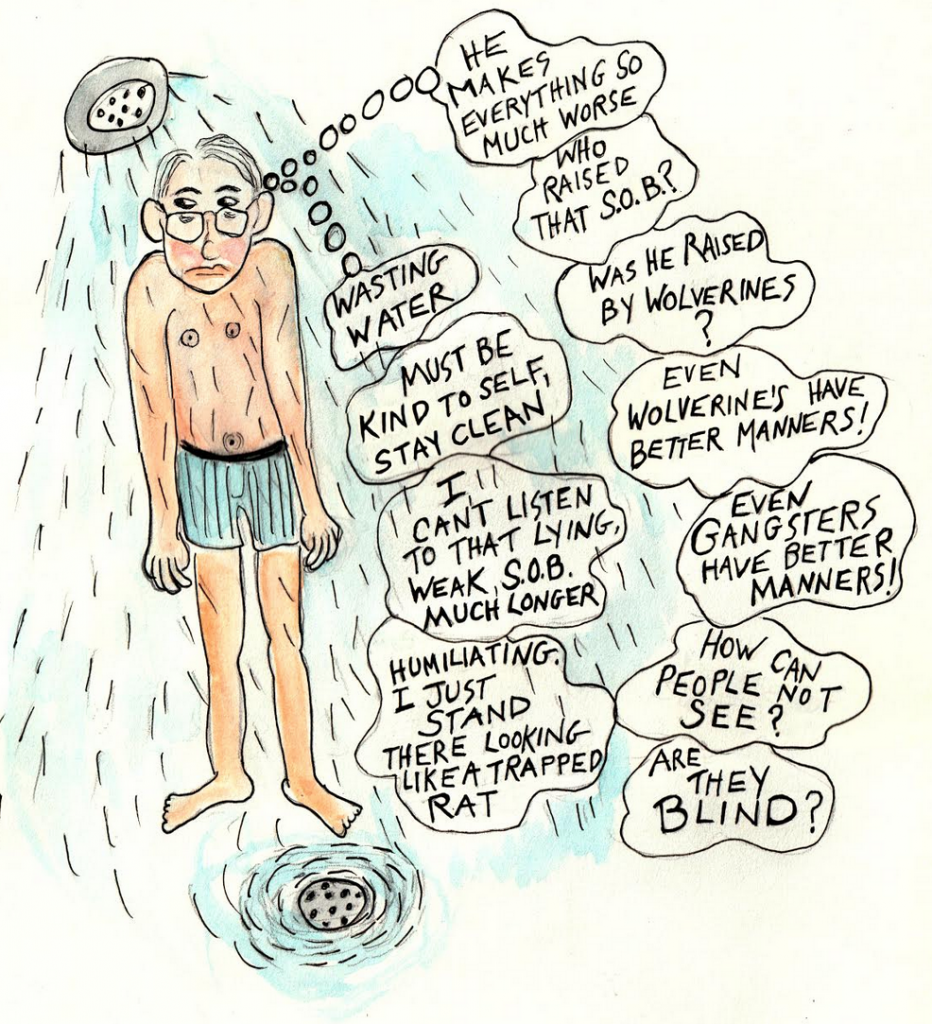
What were the highlights of your residency? Tell us about a typical day in the life in Chapala, Mexico.
I love Mexico, I’ve been to Mexico City and Oaxaca a handful of times and I always thought I’d go back there, but Lake Chapala called to me. On the website people called the residency magical and the town definitely had a special quality. Being on the lake was amazing, the musicians at night along the boardwalk, walking everywhere, a busy blue collar town as opposed to a tourist destination (although it’s that too). A typical day would be get up and do some yoga, make tea, sit down and work for about 4-5 hours on whatever chapter I was working on, and then around 5, walk to the little park, towards the lagoon, where the birds gathered. I was endlessly drawn to the the various types of birds. There were herons of all kinds: green, great blue, little blues, and night herons. Pelicans; egrets; black birds and swifts would also come out to this area before sunset and nest in the trees and the tall grasses. It was fascinating to watch and hear, and a peaceful way to end the day. (although sometimes I went back to my casita and worked for another couple hours).
Tell us about your creative process. You are working on a graphic memoir. Please tell us more about this form and how do you develop your ideas?
Well, the first thing I can tell you about my creative process is it’s not a straight line. I can spend weeks ruminating about something, and not know how to approach it, and it slips away. Or sometimes I spend weeks working on an idea and it ends up not working and I have to give it up. The stuff that works and is most meaningful, usually comes to me like a feeling that I can only describe as “whole.” I can put it down on paper and draw it out from beginning to end. It has a logic to it, with a complete arc. I used to be most inspired by taking long walks where an idea would pop into my head while walking. That still happens, but now, working on the memoir is more about sitting down at my desk and taking a deep dive into the past. I just completed a chapter about having to end a forbidden love affair when I was 16, because my father forbade it. But what I had forgotten, after I thought I’d finished the chapter, was how at one point in that relationship, I was sitting at my mother’s vanity, looking into the mirror, and asking myself existential questions, such as, was this what people called love? Was it love, or did I just have a stomach ache? All those memories came rushing back once I sat down and started writing/illustrating that chapter of forbidden love.
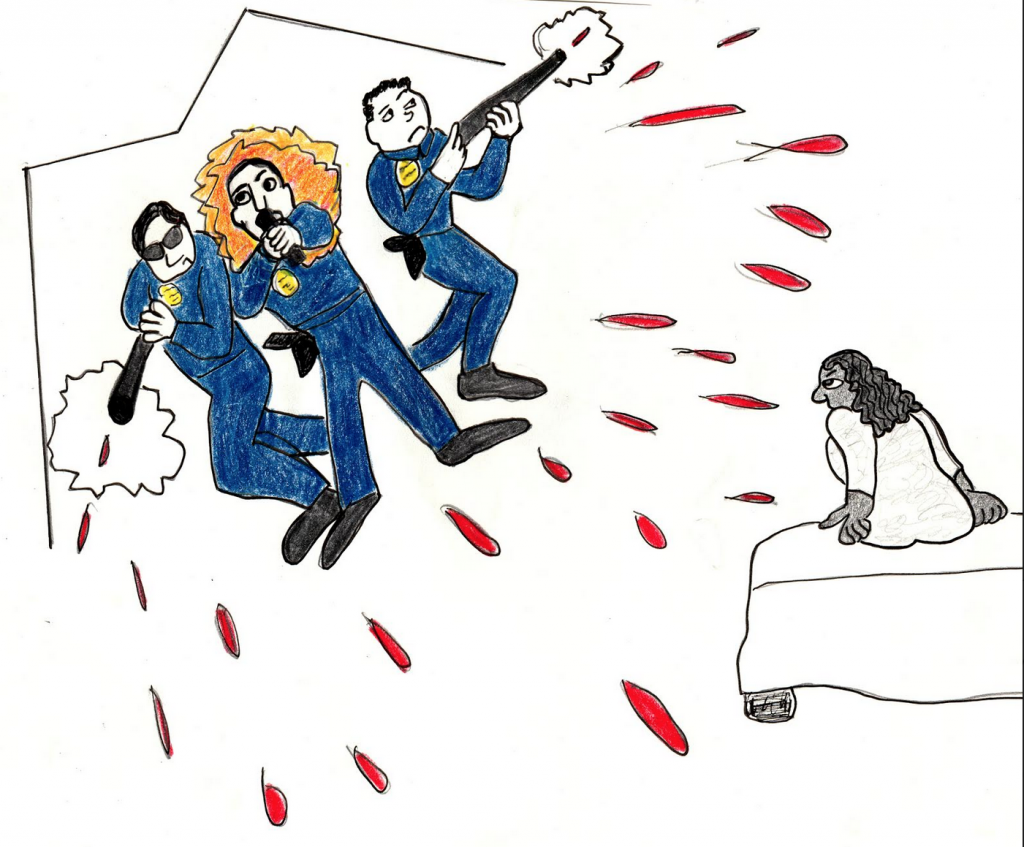
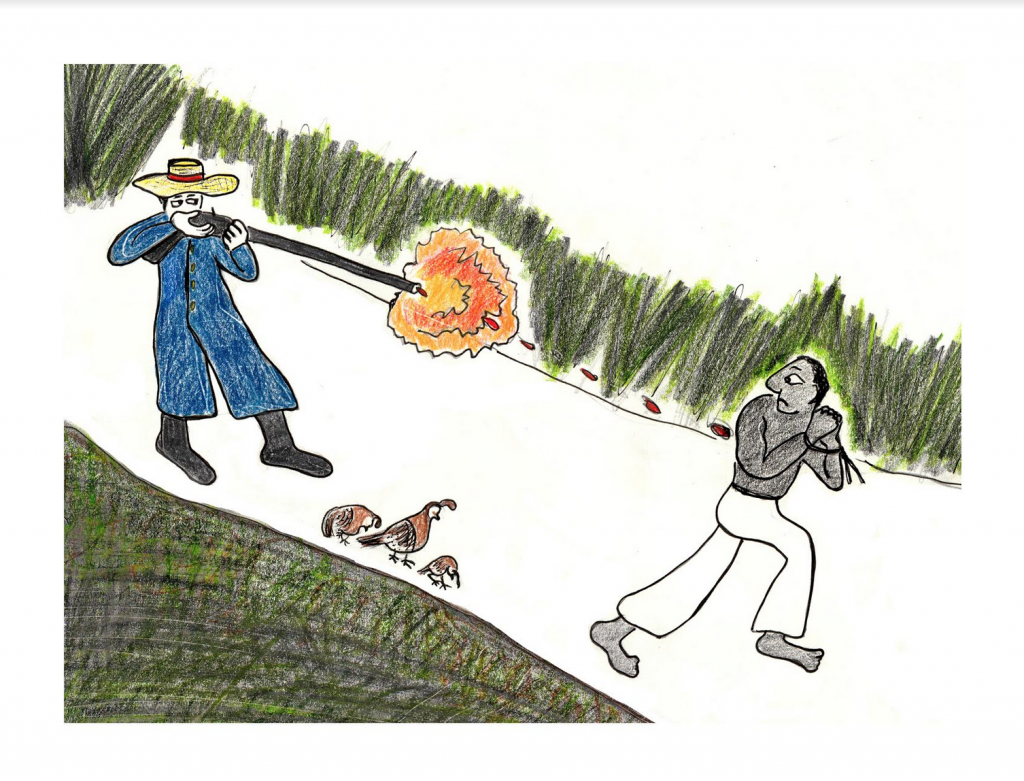
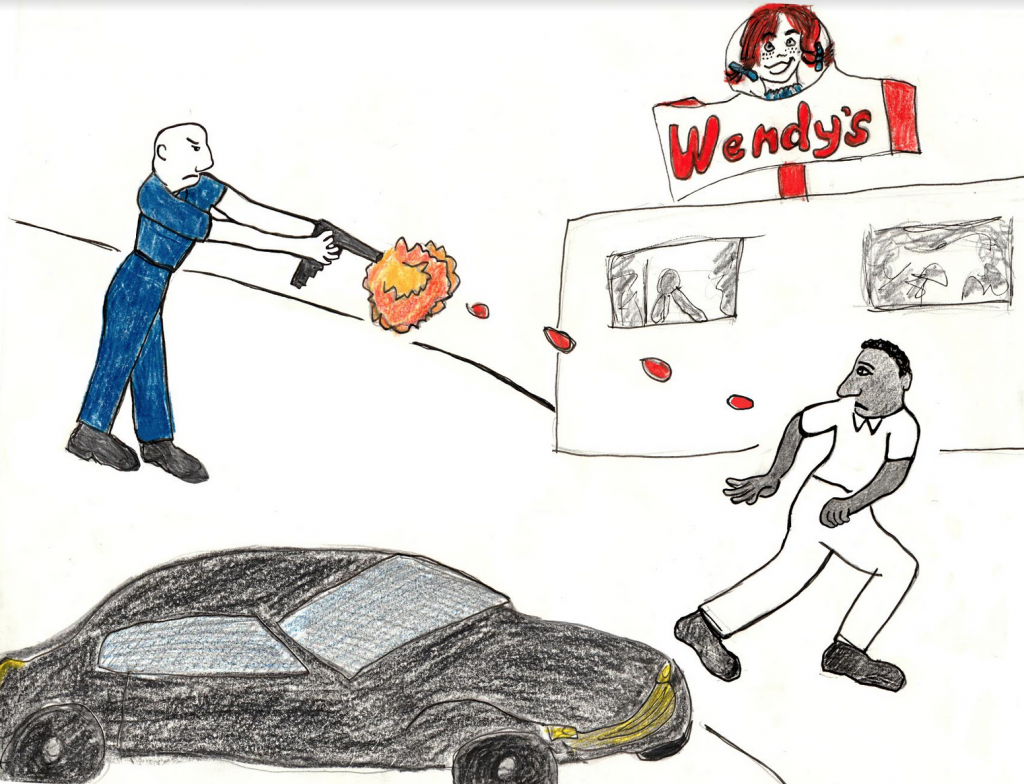
Resources:
http://charlottehildebrand.blogspot.com
http://ratsnestcomics.blogspot.com/
Instagram @ lottobrand
Stevebrodner.com
https://believermag.com/type/comics/
NY Times Diary Project (started during the pandemic):
You are teaching a Kuarantine Komics class (great title!) and also a class on 4-panel comics. We would love to hear more about these unique offerings including your teaching philosophy and approach.
I really love teaching and seeing student work is one of the most satisfying feelings a teaching artist can have. Peoples’ stories are endlessly fascinating and I love seeing that students can execute their versions of your idea in ways one never would have imagined. But I don’t teach technique, in fact I encourage people to draw like they did as children, the more raw the better. I also discourage using an eraser. When the pandemic first began, I set up a workshop on Zoom called Kuarantine Komics to give people a place to express their fears and apprehensions. I encouraged people to draw what they were feeling without restrictions and not worry about limitations they had as artists. One young woman took off, a budding comic artist just waiting for the right moment to explode! My adult children were part of the class too and it was gratifying to see what great artists they both were.
My classes through the Center of the Arts Eagle Rock, a community based non-profit started out last year, and then moved to Zoom in March. These classes are more challenging, especially since our country has been in such upheaval. I warm up the class by giving different drawing prompts. For self portraits, say, I suggest drawing 3 sides of yourself— your private, public and aspiring selves. And then we jump into the main theme of the evening. I’ll give prompts on a specific topic to get them going. Comics allow a place to say what’s on your mind, and the more raw the drawings, the more meaningful they are for the artist and viewers. The only down side is it’s harder for this teacher on Zoom. I want to stand over my students’ shoulders and point out the minutia that can make the difference between a good comic and a great one. But on Zoom I’ve had to let the teaching flow in a new way. And the comics from those classes have really been great.
